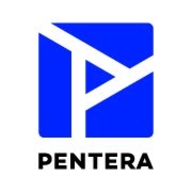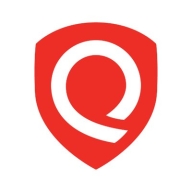

Qualys VMDR and Pentera compete in the vulnerability management and security assessment category. Based on features and user feedback, Qualys leads in traditional vulnerability management capabilities while Pentera excels in automated, continuous assessment and penetration testing methods.
Features: Qualys VMDR is renowned for its vulnerability management, policy compliance, and cloud scalability. Users value its practical vulnerability scanning, detailed reporting, and robust compliance controls. Pentera is recognized for continuous automated assessment, evidence-based remediation guidance, and facilitating in-house penetration testing, offering flexibility and rapid response.
Room for Improvement: Qualys VMDR could streamline its reporting and offer better integration with IT frameworks like ServiceNow. Users also note slow technical support and complex feature sets. Pentera may improve its dashboard granularity, scalability for smaller networks, and offer more accommodating pricing models for smaller organizations.
Ease of Deployment and Customer Service: Qualys VMDR supports adaptable cloud deployment across private to public clouds, favorable for large networks. However, its technical support feedback varies, indicating room for improvement in personalized assistance. Pentera offers flexible deployment for on-premise and hybrid setups with high customer service satisfaction but less diverse feedback.
Pricing and ROI: Qualys VMDR is perceived as expensive but offers significant value for a strong ROI, especially in large-scale agreements. Pentera, while also seen as costly, provides justified returns in vulnerability awareness and response capabilities, focusing on cost-effectiveness for larger implementations.
Some customers consider the ROI favorable, but facing difficulties now due to changes in the licensing model, which has made it more expensive compared to last year.
We saw a return on investment through significant savings in time, money, and resources.
We usually get on calls with tech support, and they are very helpful.
The response time takes a while.
When reaching out via email, they reply quickly.
Scalability depends on the license and the number of assets being monitored.
Qualys VMDR can handle scalability, although increasing the inventory can raise the licensing costs.
Qualys VMDR's scalability is good, and the customer support is good.
Qualys VMDR is stable.
When the IP is imported into a system, we cannot withdraw or revoke the license.
It does not automate patching unless the patch management module is purchased separately.
One area where Qualys VMDR can be improved is the missing feature for deploying agents for over 1,000 assets, as we need to do it manually.
If AI features were integrated, it could enhance the capabilities significantly.
Qualys offers better pricing and is feature-packed compared to other tools.
I have a notion that Qualys might be more expensive than Rapid7.
I would rate the pricing between seven to eight out of ten.
We can automate the Pentera processes by automatically creating scenarios to validate the system.
It impacts my workflow overall, with the patch management features as it has the missing patches listed in detail, making it easier to get a comprehensive report and providing some dashboards that offer visual representation.
The prioritization of vulnerabilities has improved our remediation efforts by around thirty to thirty-five percent.
Qualys VMDR provides a real-time response and reporting feature, which is excellent.
| Product | Market Share (%) |
|---|---|
| Pentera | 28.5% |
| Cymulate | 20.5% |
| Picus Security | 17.5% |
| Other | 33.5% |
| Product | Market Share (%) |
|---|---|
| Qualys VMDR | 6.9% |
| Wiz | 10.8% |
| Tenable Nessus | 8.0% |
| Other | 74.3% |


| Company Size | Count |
|---|---|
| Small Business | 5 |
| Midsize Enterprise | 1 |
| Large Enterprise | 4 |
| Company Size | Count |
|---|---|
| Small Business | 20 |
| Midsize Enterprise | 12 |
| Large Enterprise | 69 |
Pentera is the category leader for Automated Security Validation, allowing every organization to evaluate its security readiness, to know its real security risk at any given moment. Test all cybersecurity layers across the attack surface – inside and out – by safely emulating attacks & prioritize patching with a risk-based remediation roadmap.
Thousands of security professionals and service providers around the world use Pentera to guide remediation and close security gaps before they are exploited. For more info visit: pentera.io
Vulnerability Management, Detection, and Response (VMDR) is a cornerstone product of the Qualys TruRisk Platform and a global leader in the enterprise-grade vulnerability management (VM) vendor space. With VMDR, enterprises are empowered with visibility and insight into cyber risk exposure - making it easy to prioritize vulnerabilities, assets, or groups of assets based on business risk. Security teams can take action to mitigate risk, helping the business measure their actual risk exposure over time.
Qualys VMDR offers an all-inclusive risk-based vulnerability management solution to prioritize vulnerabilities and assets based on risk and business criticality. VMDR seamlessly integrates with configuration management databases (CMDB), Qualys Patch Management, Custom Assessment and Remediation (CAR), Qualys TotalCloud and other Qualys and non-Qualys solutions to facilitate vulnerability detection and remediation across the entire enterprise.
With VMDR, users are empowered with actionable risk insights that translate vulnerabilities and exploits into optimized remediation actions based on business impact. Qualys customers can now aggregate and orchestrate data from the Qualys Threat Library, 25+ threat intelligence feeds, and third-party security and IT solutions, empowering organizations to measure, communicate, and eliminate risk across on-premises, hybrid, and cloud environments.
We monitor all Breach and Attack Simulation (BAS) reviews to prevent fraudulent reviews and keep review quality high. We do not post reviews by company employees or direct competitors. We validate each review for authenticity via cross-reference with LinkedIn, and personal follow-up with the reviewer when necessary.